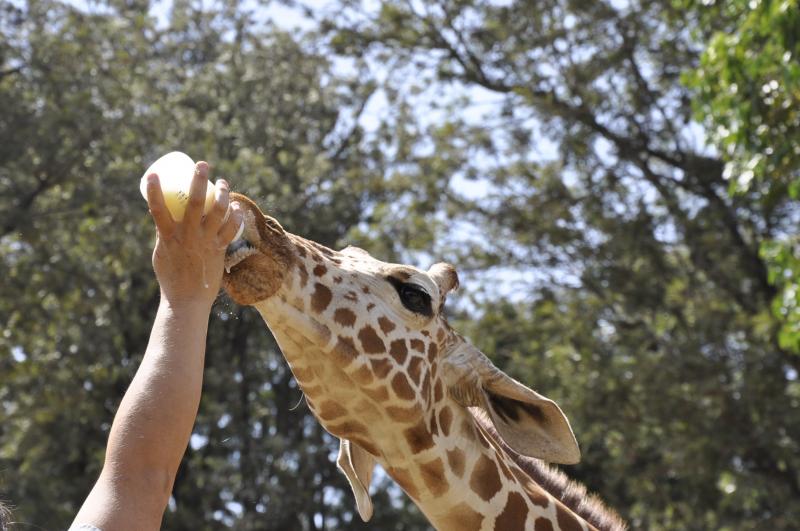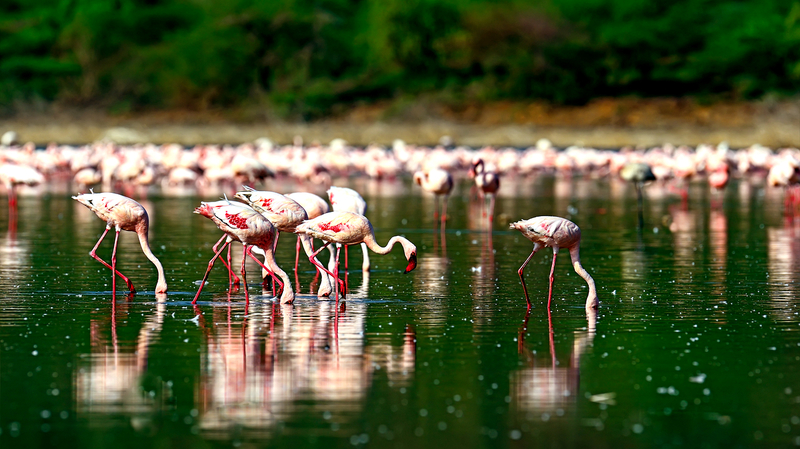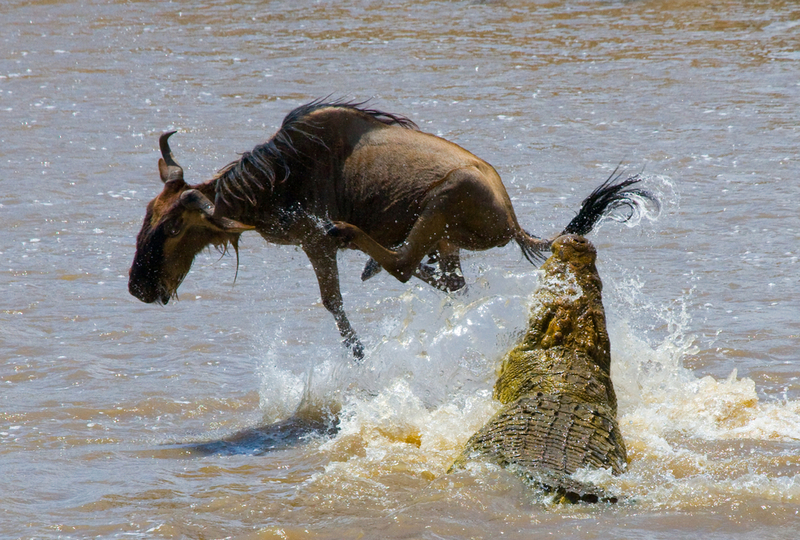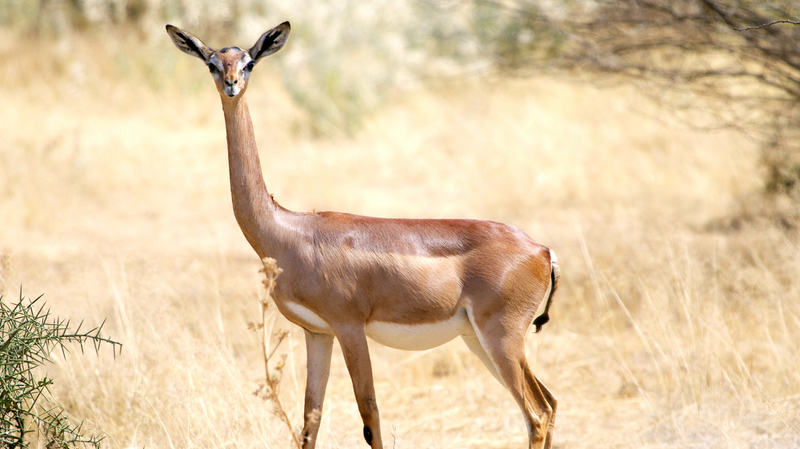- Home
- Attractions
- All Attractions
- ATTRACTIONS PROFILES
Kora National Reserve
"The Last Wilderness"
Home to the Adamsons’ Camp - Kampi ya Simba - the former home of George and Joy Adamson, the Kora National Park offers a pristine wilderness dotted with tall inselbergs and graced by the Tana River on which the Adamson’s Falls, Grand Falls and Kora Rapids are found. Visitors can enjoy the diverse birdlife, fishing in Tana River rock-climbing and also visit George Adamson's grave.
Key features
The Adamsons Bridge, Wildlife along Tana river, the Adamsons Camp - Kampi ya Simba which is the former home for George and Joy Adamson, Pristine wilderness, Inselbergs, Tana River with Adamson's Falls, Grand Falls and Kora rapids, diverse birdlife, George Adamson's grave, fishing in Tana River and safaris to the national park.
How to get there
- Roads: Kora is 280 km to the north-east of Nairobi. Access is via Thika to Mwingi then north-east through Kyuso village.
- Nairobi - Thika -Mwingi- Tseikuru - Kaningo gate
- Nairobi - Thika - Mwingi - Tseikuru - Masyungwa gate - Kampi ya simba
- Nairobi - Embu - Meru N. Park - Adamsons gate
- Nairobi - Nanyuki - Meru N. Park - Adamsons gate
A bridge (Adamson’s Bridge) across the Tana River joins the park with Meru National Park. The park has a road network.
Airstrips: Kyethoni airstrip, Kampi ya Simba airstrip and can also be accessed through Masanduku airstrip in Meru N. Park
Road Network - 4WD is required throughout the year
Attractions
Pristine wilderness, Inselbergs, Tana River with Adamson's Falls, Grand Falls and Kora rapids, diverse birdlife George Adamson's grave.
Park Entry Fee
|
Kora National Park |
Citizen |
Resident |
Non-Resident |
|||
|
Adults KSH |
Child KSH |
Adult KSH |
Child KSH |
Adult USD |
Child USD |
|
|
300 |
215 |
1,030 |
515 |
52 |
35 |
|
-
National Reserve
Mwea National Reserve
The Mwea National Reserve is located within Mbeere District, in Eastern Province, a distance of about 200km from Nairobi. The savannah ecosystem comprises of small hills with bushy vegetation and scattered large trees. Other areas are open grasslands while along the main rivers, large trees with thick undergrowth are found. Trees mainly found within the ecosystem are the different Acacia species and baobab trees. The ecosystem’s main features are the meeting point of rivers Tana and Thiba, Kamburu and Masinga hydro-electric dams, which harbour variety of biodiversity.
Major wildlife attractions include
the elephants, Rothschild giraffes, Common zebras, Lesser kudu, Buffalo, Water Buck, Bush buck, Impala, Vervet Monkeys, Aardvark, Yellow baboons, Grants gazelle, Dik dik, Cape hare, Warthog, Black backed jackal, Duiker, Sykes monkeys, Genet cat, Slender mongoose, Stripped ground squirrel, Dwarf mongoose, Crested porcupine, Rock Hyrax, Tree Hyrax and tortoise. Hippos and crocodiles are also found in the dams and rivers. Different birds and reptile species have been recorded in the reserve.
Birds:
Over 200 species of birds, Mwea is renowned for its water birds and waders. The only protected area in which the globally threatened and Kenya-endemic Hinde’s babbler is known to occur, the Reserve also shelters two other rare species; Pel’s fishing owl and the white-backed night hero
How to get there
By Road: From Nairobi, via Thika-Matuu-Masinga Dam(160 km).this route is surfaced until Masinga Dam Bridge-a further 10 km of dirt road lies between here and Makima Gate. Access is also possible via Embu-Machanga.
By Air: Masinga airstrip near Masinga lodge.By Air: Masinga Airstrip near Masinga Lodge.
Attractions
- Game Viewing
- Boat rides at Kamburu dam
- Hippo PointRealm of Rare birds
- Walking circuit
Park Entry Fee
|
Mwea National Reserve |
Citizen |
Resident |
Non - Resident |
|||
|---|---|---|---|---|---|---|
|
Adults KSH |
Child KSH |
Adults KSH |
Child KSH |
Adults USD |
Child USD |
|
|
350 |
200 |
600 |
350 |
25 |
15 |
|
-
National Reserve
Laikipia Plateau
This plateau is set against the backdrop of Mt. Kenya. It is home to one of Kenyas highest population of endangered species including black rhinos and half of the worlds Grevy zebra. It has been recently gazetted as Laikipia National Park.
-
Mountain
-
National Park
Mt. Kenya National Park
“Come touch the sky”
Climbing to 5,199 meters, Mount Kenya is the second tallest mountain in Africa. The scenery surrounding this designated World Heritage Site is breath-taking. It is pristine wilderness with lakes, tarns, glaciers, dense forest, mineral springs and a selection of rare and endangered species of animals, high altitude adapted plains game and unique montane and alpine vegetation. Visitors can enjoy mountain climbing, camping and caving with the mountain’s rugged glacier-clad peaks providing the perfect backdrop.
This is the second highest mountain in Africa and a UNESCO World Heritage Site. It has rugged glacier-clad summits and Afro-alpine moorland. Main attractions include mountain climbing, its pristine wilderness and geological variety, lakes, tarns and glaciers.
Key features
Wildlife
Include Elephants, tree hyrax, white tailed mongoose, suni, black fronted duiker, mole rat, bushbucks, water buck and Elands. Animals rarely seen include leopard, bongo, giant forest hog .
Birds
Over 130 bird species have been recorded.
Attractions
Pristine wilderness, lakes, tarns, glaciers and peaks of great beauty, geological variety, forest, mineral springs, rare and endangered species of animals, High altitude adapted plains game, Unique montane and alpine vegetation with 11 species of endemic plants.
Park Pricing
|
Mt. Kenya National Park & Reserve |
Citizen |
Resident |
Non - Resident |
|||
|---|---|---|---|---|---|---|
|
Adults KSH |
Child KSH |
Adults KSH |
Child KSH |
Adults USD |
Child USD |
|
|
Daily |
430 |
215 |
775 |
515 |
52 |
26 |
|
3 Day Package |
1,290 |
645 |
2,325 |
1,545 |
156 |
78 |
|
4 Day Package |
1,720 |
860 |
3,100 |
2,060 |
208 |
104 |
|
5 Day Package |
2,150 |
1,075 |
3,875 |
2,575 |
260 |
130 |
|
6 Day Package |
2,580 |
1,290 |
4,650 |
3,090 |
312 |
156 |
|
Kihari |
300 |
215 |
1,030 |
515 |
43 |
26 |
-
Mountain
-
Mountain Climbing
-
National Park
Bisanadi National Reserve
"Paradise unspoiled"
In the vast arid wilderness north of Meru National Park lies the Bisanadi National Reserve. This hot and arid bush land is host to many species of mammals including lions, elephants, cheetahs, rhinos, buffalos and over 400 species of birds. Visitors can go boating and fishing on the Tana and the Rojewero rivers and enjoy camping under the stars in this tough but beautiful place.
How to get there
Road: The reserve is readily accessible via Meru National Park, Murera Gate
Attractions
- Wilderness habitat
- Game viewing
- Fishing and boating on River Tana and Rojewero River
- Camping is available
-
National Reserve
Meru National Park
“Welcome to Complete Wilderness”
Brilliant on a magnificent scale, the Meru and Kora sister parks feature luxuriant jungle, coursing rivers, verdant swamp, khaki grasslands and gaunt termite cathedrals all under the sky’s great blue bowl. Little visited and utterly unspoilt, few places are comparable to the remote and rugged atmosphere found here. Visitors can see Grevy's zebras, elephants, Bohor reedbucks, hartebeests, pythons, puff adders, cobras, buffalos and more than 427 recorded species of birds.
Key features
Wildlife
Grevy's Zebra, Elephants, Eland, Bush Pig, Waterbuck, Cheetah, Leopard, Reticulated Giraffe, Hippopotamus, Bohor Reedbuck, Hartebeest, Python, Puff Udder, Cobra, Buffalo, more than 427 recorded species of birds
Birds
More than 427 recorded species
Vegetation
Mainly thorny bush land in the North, wooded grasslands in the West and open grassland elsewhere. The park also offer dense riverine forests of Doum and Raffia palm.
Attractions
- Former home of Joy and George Adamson and Elsa the lioness
- Views of Mt Kenya
- Rivers and riverine habitats
- Tana river
- Adamson's falls
Park Fees
|
Meru National Park |
Citizen |
Resident |
Non-Resident |
|||
|---|---|---|---|---|---|---|
|
Adults KSH |
Child KSH |
Adult KSH |
Child KSH |
Adult USD |
Child USD |
|
|
300 |
215 |
1,030 |
515 |
52 |
35 |
|
-
National Park
Nairobi Orphanage
“Refuge of the Wild”
The Nairobi Animal Orphanage is located in the Nairobi National Park. It serves a treatments and rehabilitation centre for wild animals. The Orphanage hosts lions, cheetahs, hyenas, jackals, serval cats, rare Sokoke cats, warthogs, leopards, various monkeys, baboons and buffalo. Various birds can also be viewed including parrots, guinea fowls, crowned cranes and ostriches.
Wildlife
Lion, cheetah, hyena, jackal, serval cat, very rare Sokoke cats, warthog, Leopard, various monkeys, baboons and buffalo.
Birds
Parrots,guinea fowls,crowned cranes and ostriches.
Attractions
- Close-up,views of animals
- Animal adoption programme
Park Fees
|
Nairobi Animal Orphanage |
Citizen |
Resident |
Non-Resident |
|||
|---|---|---|---|---|---|---|
|
Adults KSH |
Child KSH |
Adult KSH |
Child KSH |
Adult USD |
Child USD |
|
|
215 |
125 |
300 |
170 |
22 |
13 |
|
-
Animal Sanctuary
-
Birding Site
Nairobi Safari Walk
“The Preview”
With its raised wooden boardwalk that allows for uninterrupted views of the animals, the Safari Walk is a show case for Kenya’s Parks and Reserves, allowing visitors to discover what they can expect to see across the country. Visitors can see a sample of the country’s rich animal life including the rare bongo, white rhino and albino zebra as well as big cats, antelopes and primates. It is also home to some 150 species of local trees.
Key features
- Three major ecosystems (wetlands, savannah and forestry);
- Variety of mammals, reptiles, insects and birds;
- The boardwalk;
- Children’s Museum.
- Wildlife - Cheetah,lion,leoapard,pygmy hippo,zebra colubus monkey,bongo rhino.
- Wide variety of birds and insects.
Attractions
- Large predators- lion, leopard, hyena and cheetah.
- Aggregations of large herbivores- eland, buffalo, zebra and wildebeest
- Ivory Burning Site Monument
- Walking trails at hippo pools
- Nairobi Safari Walk & the Orphanage.
- Spacious accommodating picnic sites
Park Fees
|
Nairobi Safari Walk |
Citizen |
Resident |
Non-Resident |
|||
|
Adults KSH |
Child KSH |
Adult KSH |
Child KSH |
Adult USD |
Child USD |
|
|
215 |
125 |
300 |
170 |
22 |
13 |
|
-
Animal Sanctuary
Lake Bogoria National Reserve
This lake is referred to as "The healing place" and is just about 3 hours drive from Lake Nakuru. It is home to one of the largest populations of the lesser flamingoes. The lake is geothermically active on the western shore, with geysers and hot springs.
The lake lies in a trough below the Ngendelel Escarpment, a sheer wall 600 metres (2,000 ft) high. The lake covers 32 square kilometres (12 sq mi). It is geothermically active on the western shore, with geysers and hot springs.The geologist J.W. Gregory described the lake in 1892 as "the most beautiful view in Africa" The reserve is in a semi-arid area. The only major river feeding the lake is the Waseges River, which rises on the northern slopes of the Aberdare Range.
The Waseges runs through productive agricultural land higher up, through bush and scrub used for grazing, and then through very dry bush before entering the lake at its northern end.The lake is surrounded by grasslands dotted with bushes. There is acacia-ficus woodland to the south, and the north merges into a papyrus swamp. The park was opened in November 1970. Facilities for tourists include the park lodge, three public campsites and one privately operated campsite. Visitors may also bathe in the hot springs, which form a natural spa.[6] The reserve was submitted as a candidate World Heritage Site in 1999.
Ecology
The lake is alkaline, feeding blue-green algae which in turn feed flamingoes. At times the number of flamingoes feeding in the lake may be as high as two million. Raptors such as tawny eagles prey on the flamingoes. In total, 135 species of bird have been recorded. They include little grebe, pratincole, swift, little bee-eater, cape wigeon, yellow-billed stork, African spoonbill, augur buzzard, gabar goshawk, water dikkop, great tit, starling, hornbill and crombec.
The reserve has a herd of the relatively uncommon Greater Kudu. Other large mammals include buffalo, zebra, cheetah, baboon, warthog, caracal, spotted hyena, impala and dik dik. The Waseges flows through regions of intensive coffee cultivation where heavy use is made of chemical fertilizers and pesticides, which may be polluting the lake. Many visitors are attracted to the hot springs on the western lakeshore, and these cause pollution from solid wastes. Siltation is another threat to biodiversity.
-
National Reserve
Lake Kamnarok National Reserve
Lake Kamnarok is the only ox-bow lake in Kenya, having the second largest population of crocodiles in Africa after Lake Chad. The name originated from the word Narok, which is a species of water plant widely found in the lake in the early stages of lake formation.
-
Game Reserve
Kerio Valley National Reserve
The Kerio Valley National Reserve is a protected area in the Kerio Valley, Kenya, a branch of the Great Rift Valley The 66 square kilometres (25 sq mi) reserve was created in 1983 and is managed by the Kenya Wildilfe Service
The isolated Kerio Valley lies between the Cherengani Hills and the Tugen Hills The Elgeyo Escapment rises more than 1,830 metres (6,000 ft) above the valley in places. The valley is 4,000 feet (1,200 m) deep. It has semi-tropical vegetation on the slopes, while the floor of the valley is covered by dry thorn bush. The most comfortable time of the year is in July and August when the rains have ended and the temperatures are not excessive.
The reserve is on the west side of the crocodile-infested Kerio River, while the Lake Kamnarok National Reserve is on the east side. The reserve has dramatic scenery, and prolific birdlife. As of 2006 there were no fees and no facilities, although it was possible to camp in the bush beside Lake Kanmarok. After the reserve was established there was an increase in the wildlife population, including elephants.
-
National Reserve
Nasalot National Reserve
Occupying about 9,200 hectares of beautifully rugged land, this reserve is made up of mainly plains, broken up by the impressive Sekess Hills. Major attractions include elephant, Lion, leopard, spotted hyena, jackal, hippo, giraffe, impala, Grant and Thompsons gazelle, plains zebra, eland, lesser kudu, bushbuck, duiker, and dik dik.
The reserve is quite remote which means few visitors and a chance to be at one with nature in the seemingly endless plains within its borders. Visitors to this paradise can also enjoy spectacular views from Nasolot Hill, bird watching, camping, fishing and nature walks.
How to get there
- Road: The reserve is 146 km north of Kitale to the west of the A1 Kitale-Lodwar road. The reserve’s gate lies 6.2 km off the A1 main road.
- Air: There are air strips at Turkwel dam and Kaputirr.
Attractions
- Rocky out crop at the periphery of the reserve called Nasolot Hill
- Game viewing
-
National Reserve
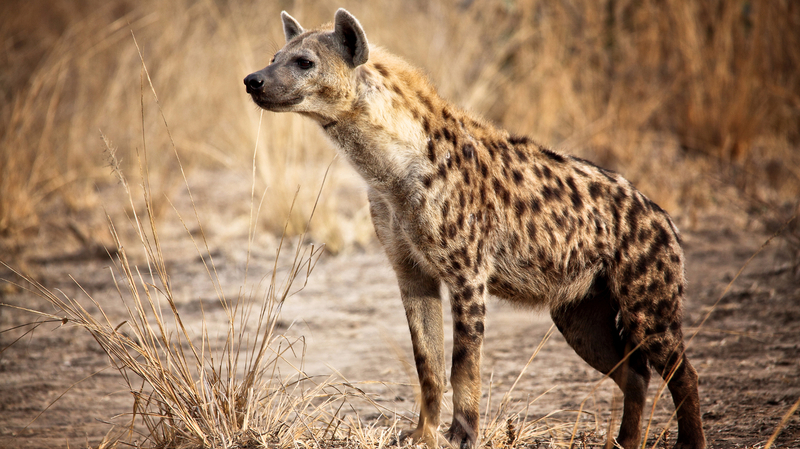
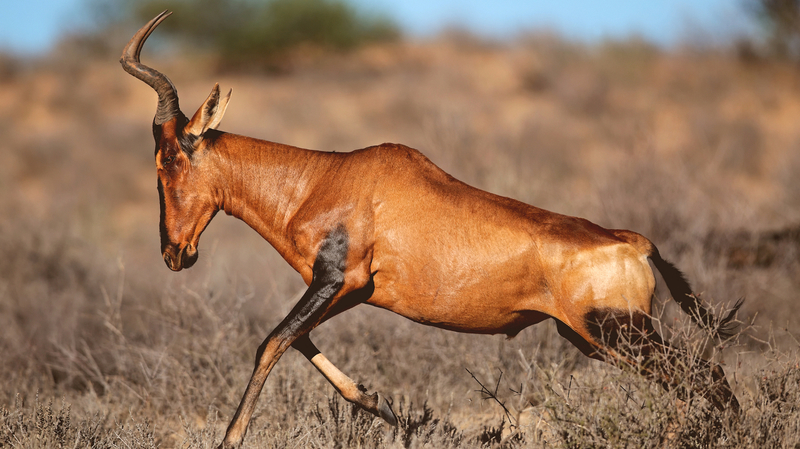

.jpg)

.jpg)
